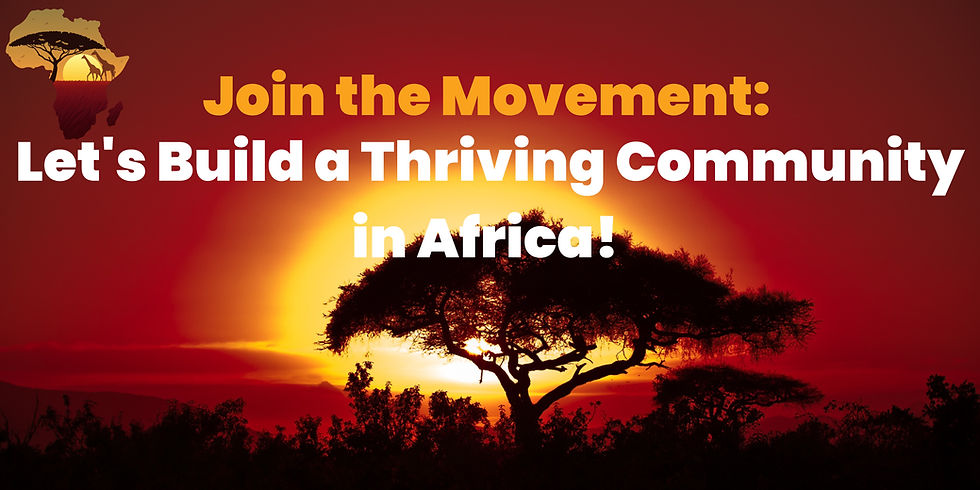What Would The Future Hold
- Antoine Perrin
- Aug 27, 2023
- 2 min read
Projecting the landscape of Africa over the next 100 years based on the success of the "Exodus to Africa" movement involves a degree of speculation, as it depends on a multitude of factors, including political stability, economic growth, technological advancements, and social dynamics. However, we can speculate on potential outcomes based on the information provided.
Economic Impact: The successful integration of the "Exodus to Africa" community could contribute to local economic development by creating jobs, fostering entrepreneurship, and boosting various sectors such as tourism, agriculture, and services. The community's sustainable practices and local economic contributions may inspire similar initiatives, leading to more eco-friendly developments and economic growth across the region.
Cultural Exchange and Education: The integration of African American history into local schools, colleges, and universities could lead to a broader understanding and appreciation of the shared history between African-Americans and Africans. This cultural exchange may result in a more globally aware and interconnected population, fostering unity and reducing cultural misunderstandings.
Technological and Educational Advancements: The development of engineers, technicians, artists, and educators from the "Exodus to Africa" community could lead to significant technological advancements and innovations in various fields. The collaboration between the local population and the community could result in the establishment of research centers, technology hubs, and educational institutions, further contributing to economic growth and knowledge dissemination.
Infrastructure Development: The infrastructure investments made by the community, such as transportation systems and community facilities, could serve as a foundation for further urban development and connectivity. This could lead to more efficient transportation networks, improved access to education and healthcare, and the establishment of new urban centers.
Political Landscape and Social Integration: The successful integration and contributions of the "Exodus to Africa" community could serve as a model for social cohesion and integration. Positive interactions between the community and the local population could inspire broader social and political changes, fostering more inclusive policies and reducing social disparities.
Resource Utilization and Sustainable Practices: Access to local resources, such as those in Nigeria, could facilitate sustainable development practices. The "Exodus to Africa" community's emphasis on renewable energy, organic farming, and waste management could inspire others to adopt similar practices, leading to a more environmentally conscious and resource-efficient society.
International Collaboration and Investment: The success of the project could attract international attention and collaboration. Increased investment from both domestic and foreign sources could lead to the development of new industries, further driving economic growth and technological advancements.
Cultural Preservation and Exchange: Over time, the cultural exchange between the African American community and local cultures could lead to the preservation of cultural heritage and the emergence of new cultural expressions. This exchange may contribute to a more diverse and vibrant cultural landscape.

It's important to note that while the outlined plan is comprehensive, the actual outcomes would depend on various factors, including geopolitical developments, shifts in global economies, and unforeseen events. Additionally, the success of the "Exodus to Africa" movement and its long-term impact would depend on effective collaboration, continuous community engagement, and adaptability to changing circumstances over the next century.






Comments